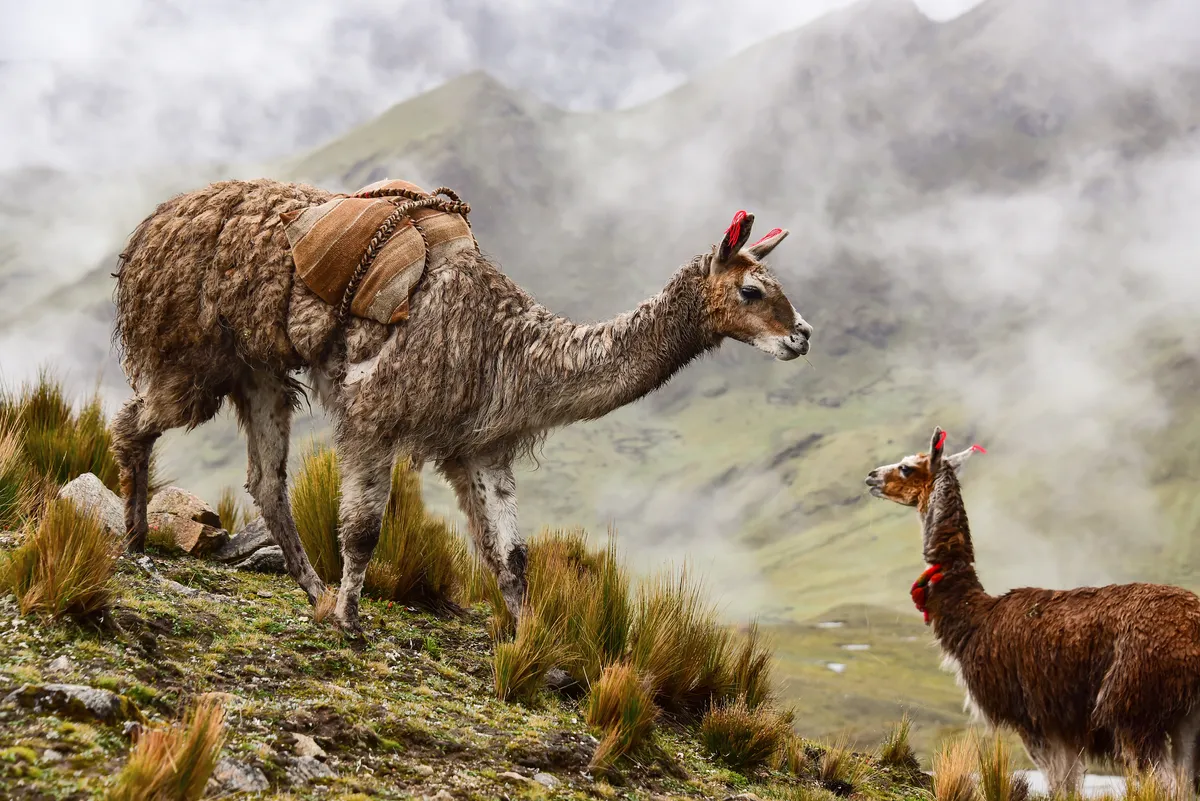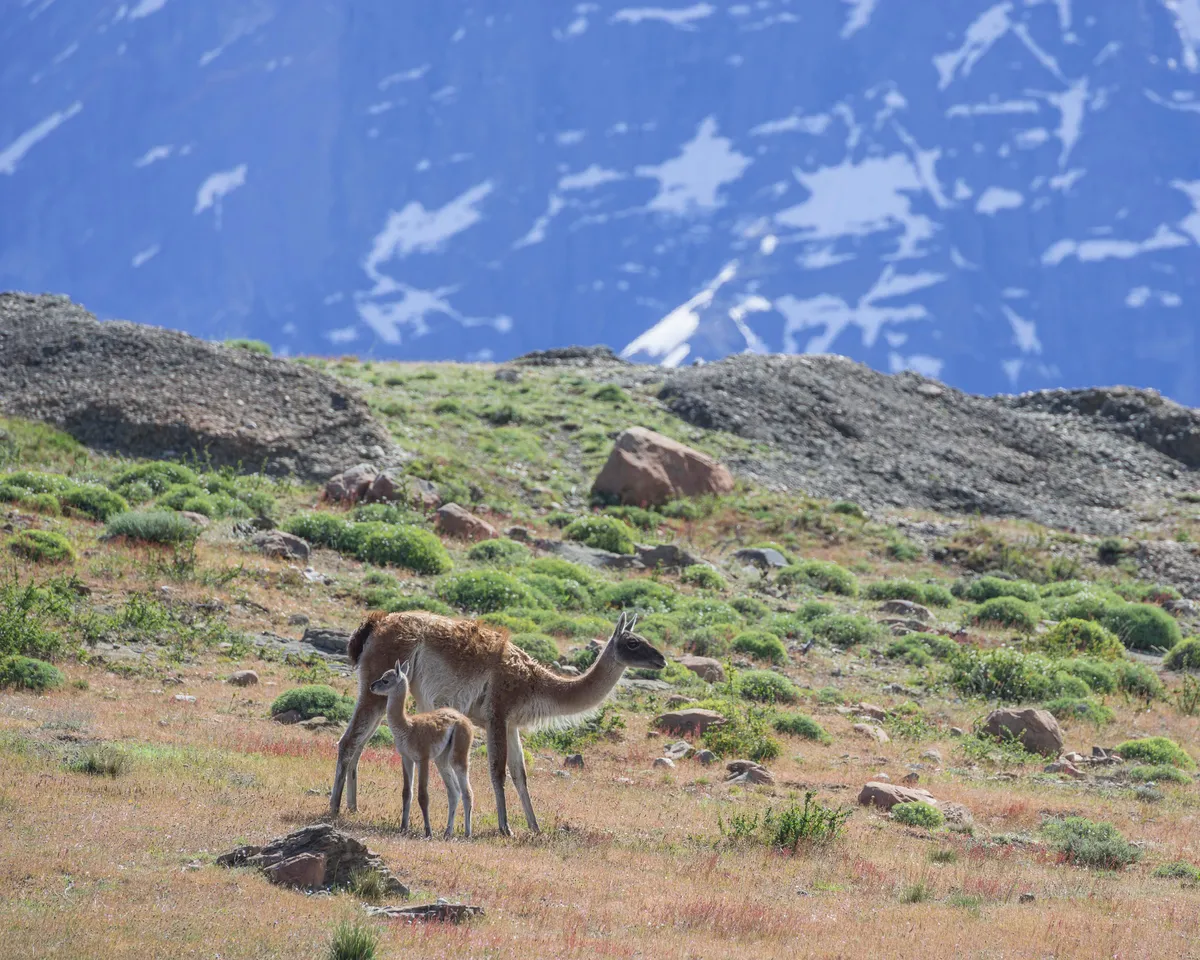What are guanacos?
The guanaco is the wild relative of the llama, and is one of the largest terrestrial mammals found in South America, standing between 1-1.3m in height at its shoulder.
Both the guanaco and the vicuña – another relative to the llama, and thought to be the wild ancestor of the alpaca – are camelids. The Camelidae family consists of only seven extant (living) species: the three Camelus species and domesticated animals (dromedary camels, Bactrian camels and wild Bactrian camels) and the four Lama species and domesticated animals (guanaco, vicuña, llama and alpaca).

Where do guanacos live?
Guanacos can be found throughout much of South America, in a range of environments, from arid desert to the Patagonian Steppe – and even the Falkland Islands.
The guanaco is equally at home at a range of different altitudes and in some parts of Southern Chile, can be found on land below sea level, or 4000m above it.
More on South American wildlife:
Can guanacos spit?
Yes guanacos can spit. Guanacos (and their domesticated descendents, the llamas), are able to spit a distance of nearly 2m for the purposes of self-defence and communication. The spray, directed at their targets with great accuracy, comprises the rather unsavoury mix of saliva, digestive juices and the undigested contents of the stomach.
Other spitting stars from the animal kingdom include, obviously, the spitting cobra (blasts venom from its fangs); the archerfish (fires jets of water to topple bugs from riverside vegetation); and the walrus (also fires jets of water – to dislodge clams from the seabed).
Sarah McPherson
How did guanacos end up on the Falkland Islands?
You may have seen the guanacos (the wild ancestor of the llama) and vicuñas of mainland South America on stunning BBC wildlife programmes. But if you happen to visit the Falkland Islands, and specifically Staats Island, part of the Beaver Island Group, you’ll spot not just the native Magellanic penguins, but also guanacos.
Why they were originally introduced to the Falklands is unclear, but we know guanacos were brought to East Falkland in the early 1860s, and were even hunted there in 1871. However, this attempt to establish them ultimately failed.
Most credit for the later, successful introduction of guanacos is given to Scotsman John Hamilton, who lived in Patagonia in the 1930s. In 1934, at the request of the Falklands government, 26 guanacos were shipped to the Falklands, and 15 were taken to Staats Island.
This small islet is still home to their descendants today. But there are now fears that the species is overgrazing the native tussac grass, which is an important habitat for native birds and seals.
What are baby guanacos called?

Young guanacos are called chulengos. A single chulengo is born after a gestation period of eleven and a half months, and can walk immediately after birth.
How do guanacos survive at high altitudes?
Whilst the guanaco has some unique adaptations (including split lips to aid food manipulation), it is perhaps their physiological adaptations to altitude that are perhaps some of the most fascinating.
The guanaco has a huge heart, approximately 15-20% bigger than any other mammal of a similar size. This helps pump the guanacos’ blood around its body, blood that has approximately four times the amount of red blood cells in compared to humans.
Guanaco blood cells are also unique in their oval shape, are small in size and have a very high haemoglobin content. All three features mean that the blood cells have a high oxygen affinity and allow the guanaco to survive in higher altitudes where oxygen is more limited.
These blood adaptations also allow the guanaco to maintain high amounts of resting blood glucose, perfect for when a high energy situation (such as running from a predator) is required.
What hunts guanacos?
The main predator of the guanaco is the puma (also known by a variety of other names including cougar and mountain lion).
More on pumas:
Main image: Guanaco in Torres del Paine National Park, Chile. © Markus Lang/EyeEm/Getty
